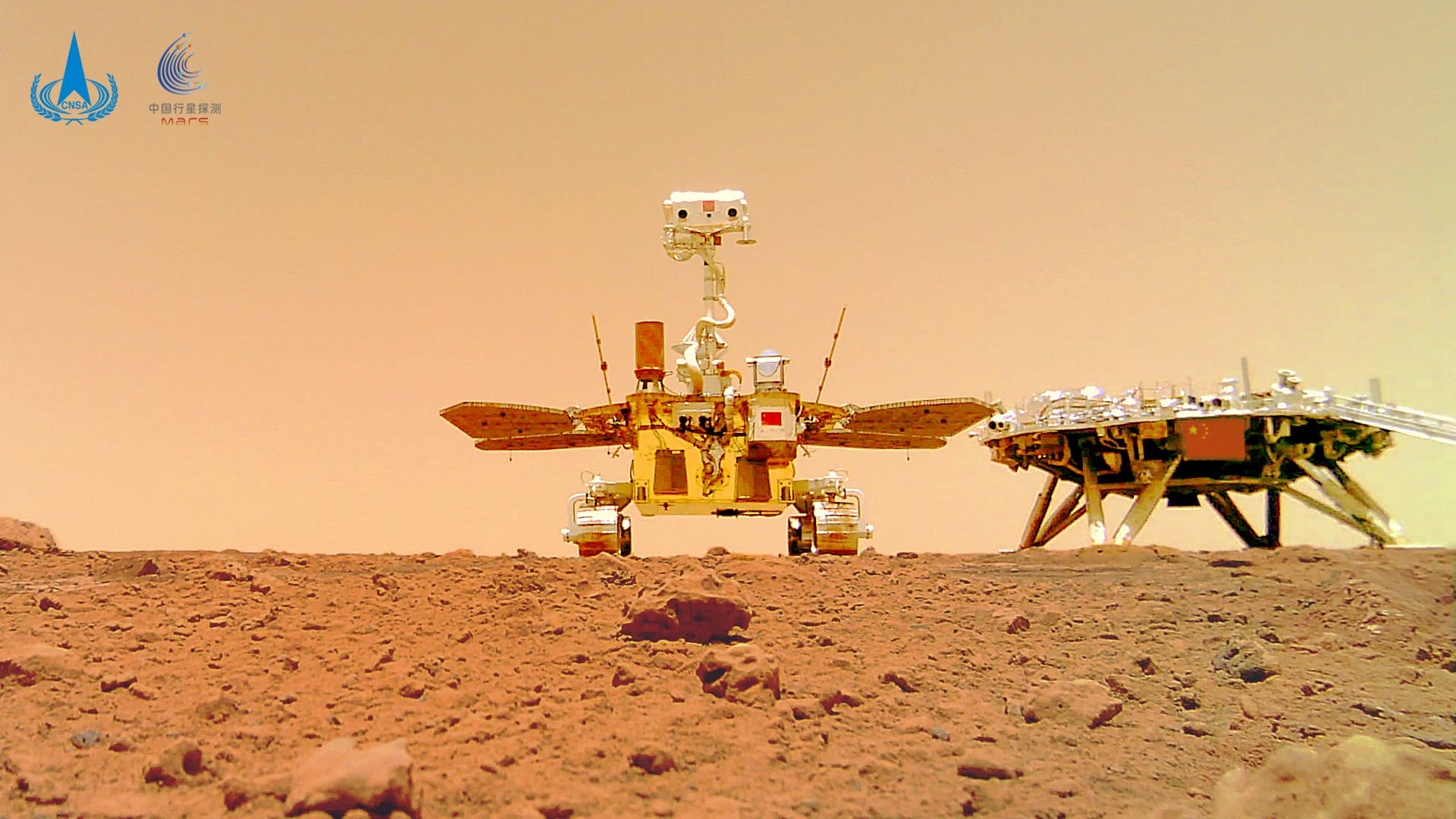
For SpaceUpClose.com & RocketSTEM
CAPE CANAVERAL, FL – China’s Zhurong rover snapped a completely unique and stunning selfie of the six wheeled rover standing side by side with the lander platform that safely delivered it to the surface of the Red Planet onto the plains of the Utopia Planitia landing site – thus becoming the first ever Chinese spacecraft to land on Mars about one month ago on May 11 as part of the Tianwen-1 mission.
Chinese officials with China’s space agency the China National Space Administration (CNSA) released the ingenious first-of-its-kind ‘super cool’ panoramic selfie image along with others during a press conference heralding the complete success of the interplanetary exploration Tianwen-1 mission on Friday, June 11.
To capture the spectacular selfie the rover first drove about 10 meters to the south of the landing platform, and then detached a small remote camera mounted on its bottom and placed it on the surface looking back. The selfie image was then relayed wirelessly back to the rover and transmitted to Earth.
Zhurong then “retreated to the side of the platform. The image was then taken and transmitted wirelessly to the rover, and finally sent back to Earth relayed by the orbiter in its orbit,” China CGTN state affiliated media reported at the press conference.
NASA has not done anything like this – placing a separate remote camera on the ground – instead relying on a high resolution color camera mounted on the terminus of the 7 foot long (2 m) robotic arm to look back to capture selfies of America’s Mars rovers – Perseverance and Curiosity.
“The release of the first scientific images marks a complete success of China’s first Mars exploration mission,” said CNSA.
“The images show the landing site panorama, Martian topography and landforms, the landing platform, and a selfie of the rover itself with the landing platform.”
CNSA: #Tianwen1 Mars mission achieves "firsts" in China's aerospace history https://t.co/Xd8JcrVSWz
— CGTN (@CGTNOfficial) June 12, 2021
With the successful landing Zhurong thereby made history to become the first ever Chinese spacecraft to soft land on the 4th rock from the Sun and thereafter rolled onto the surface about a week later starting its mobile 3 month long mission to explore the Red Planet.
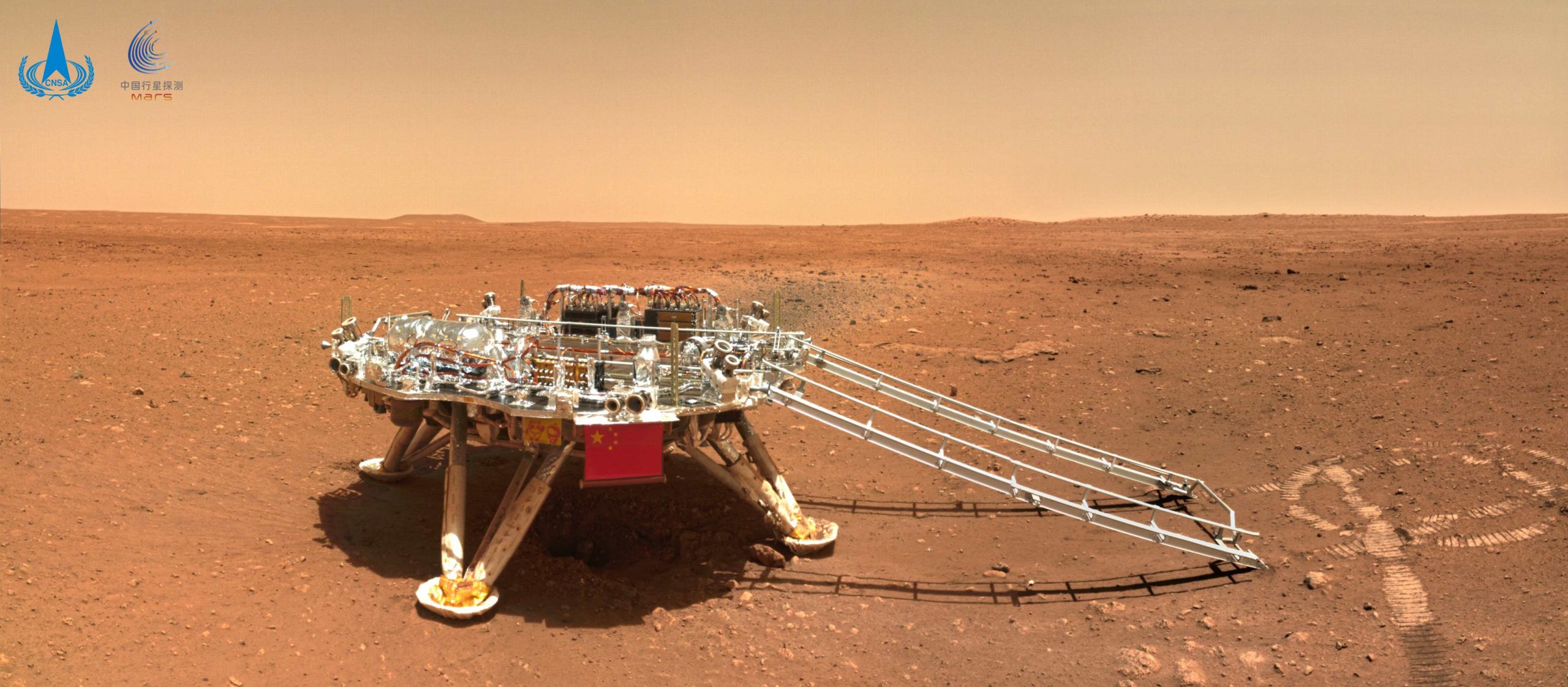
Zhurong is in excellent health to date and carrying out its mission since it rolled down the lander ramp and onto Mars, on May 22.
“Zhurong is very healthy and steadily making way to its designated targets every day,” Zhang Rongqiao, Chief Designer of China’s first Mars exploration mission, told CGTN Chinese state media at the images’ unveiling ceremony.
“Since the touchdown on May 15, the rover has been checking out its own conditions as well as its surroundings; it has moved some 80 meters by now.”
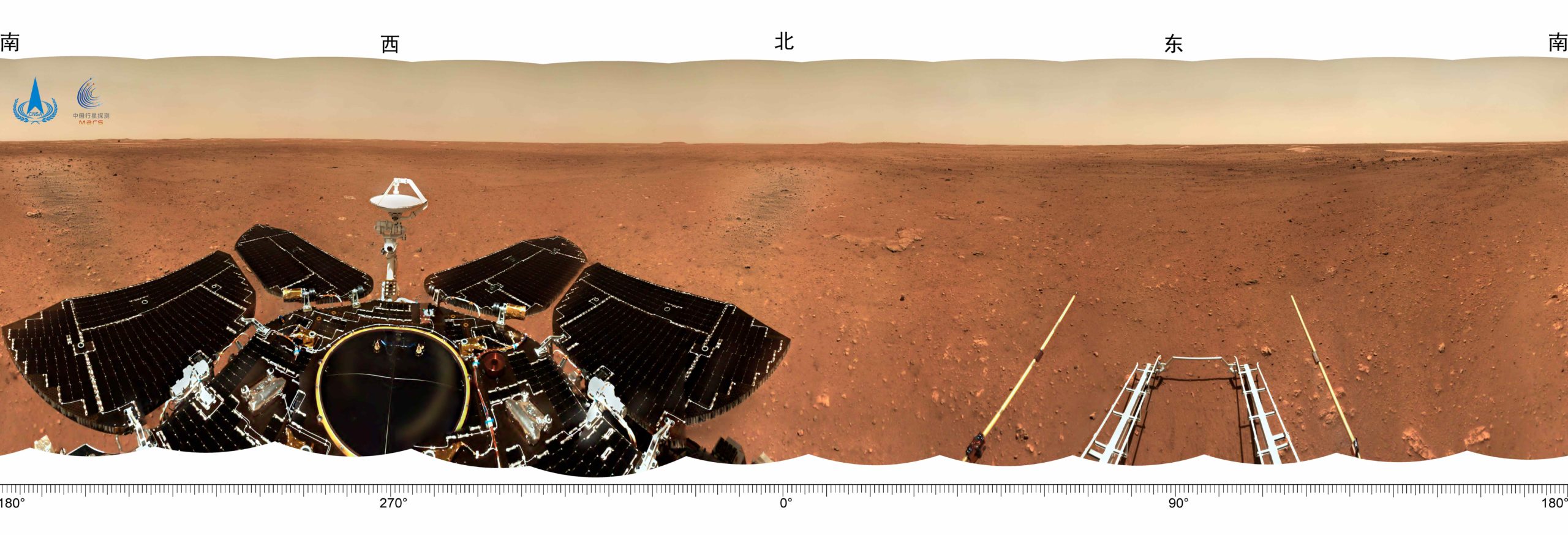
Zhurong is named after the Chinese god of fire, loaded with six science instruments and weighs 240 kg (530 lb) and a height of 1.85 m (6 ft).
Officials confirmed a decision that the rover is driving south from the landing site because that leads to interesting science targets
“We selected this particular direction for several reasons. The altitude picks up that way, from the ancient martian ocean to land,” Liu Jianjun, chief designer of the ground application system of the Tianwen-1 probe, told CGTN
“And that’s also where we’ll come across some of the most interesting things we care about, like mud volcanoes and sub-surface ice.”
China is thereby only the second nation from Earth to successfully soft land a rover on Mars and transmit back significant amounts of data and imagery – following the United States which is currently operating fleet of rovers and orbiters at Mars including the new Perseverance Mars rover and the Ingenuity Mars Helicopter.
The China National Space Administration (CNSA) released images that were taken by the country's Zhurong Mars rover. Take a look.https://t.co/HLd8GMhZsV pic.twitter.com/QKckZ6U1Ao
— CGTN America (@cgtnamerica) June 11, 2021
The Zhurong Mars rover is a component of China’s 11,000-pound (5-metric ton) Tianwen-1 mission comprising an orbiter, lander and rover that successfully arrived in Mars orbit on February 10.
“The rover will travel on the Mars surface and gather information of its surroundings, carry out scientific explorations with six payloads, including a configured terrain camera, multispectral camera, subsurface [water ice] detection radar, surface composition detector and more,” says CNSA.
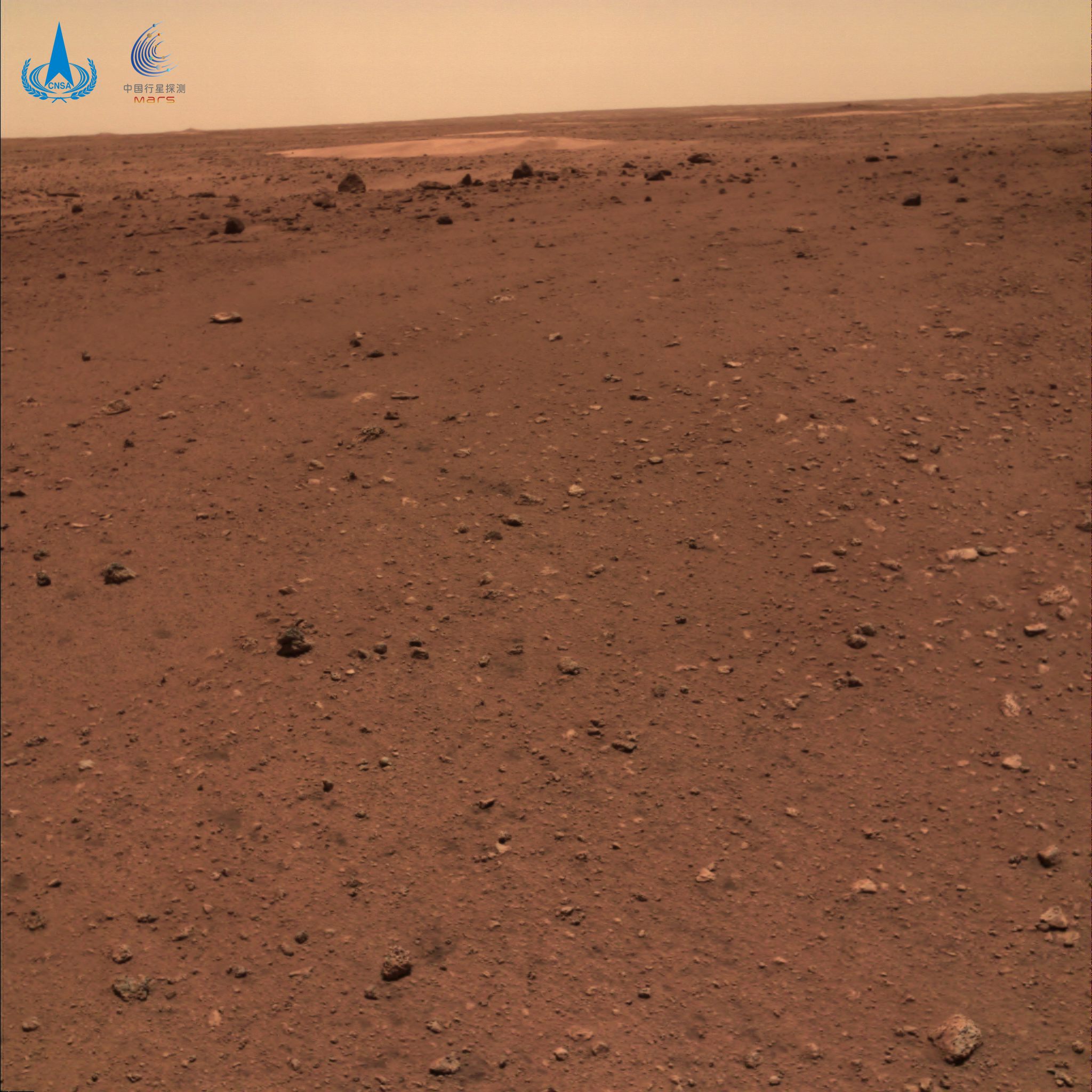
The mission was developed, directed and funded by China’s national space agency – namely the China National Space Administration (CNSA).
There is international participation on the mission.
CNSA has partnered with four other space agencies, namely the European Space Agency (ESA), France’s National Center for Space Studies, Argentina National Space Activities Commission and Austrian Research Promotion Agency, in payload calibration and the mission’s measurement and control.
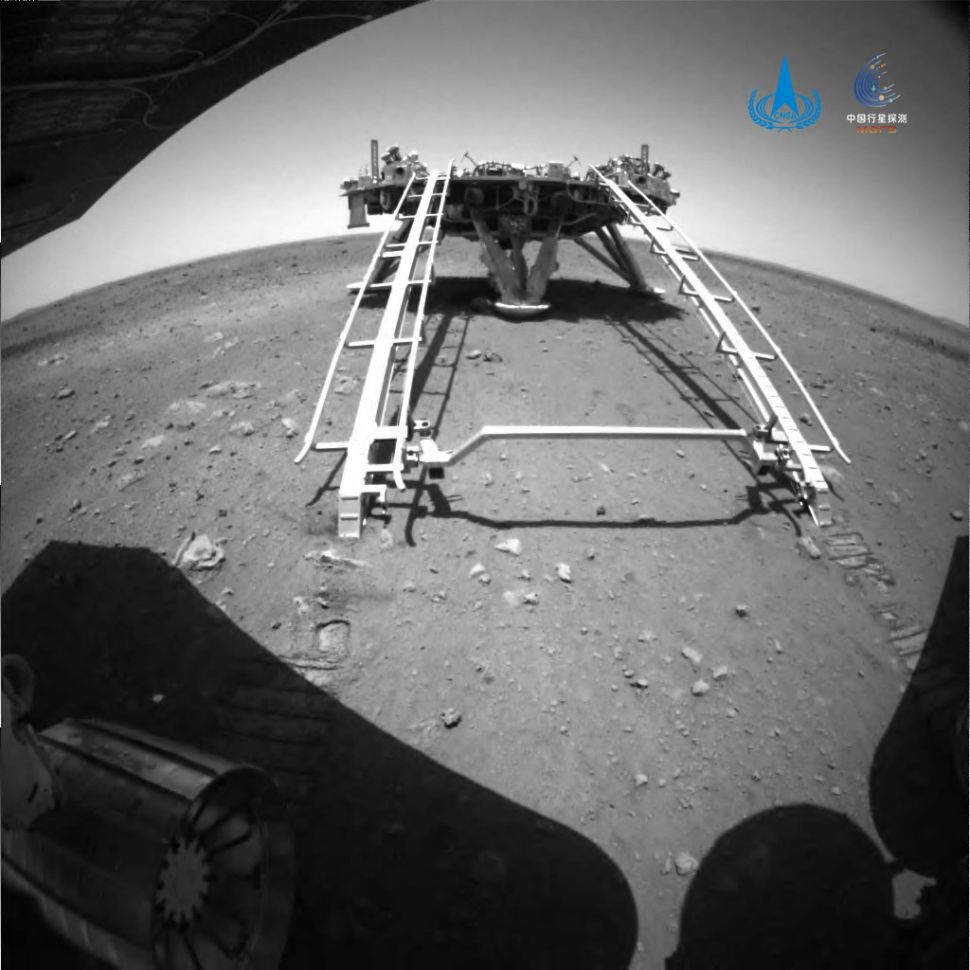
China plans to go deeper into the solar system and has plans to send a probe on a voyage to Jupiter
China to go deeper into solar system: expert
For more: https://t.co/GgatSLfMGm pic.twitter.com/ODvzoWGjf1
— CGTN (@CGTNOfficial) June 12, 2021
After entering polar elliptical orbit in February 2021 ranging between 165 miles (265 kilometers) and nearly 7,500 miles (12,000 kilometers) the orbiter deployed the rover/lander on May 14, 2021.
Watch Ken’s continuing reports about Tianwen-1, Mars 2020 Perseverance and Curiosity rovers, Artemis and NASA missions, SpaceX, Starlink, ULA missions, Commercial Crew Starliner and Crew Dragon and onsite for live reporting of upcoming and recent SpaceX and ULA launches including Crew 1 & 2, Demo-2, ISS, X-37B, Solar Orbiter, NRO spysats and national security missions and more at the Kennedy Space Center and Cape Canaveral Space Force Station.
Stay tuned here for Ken’s continuing Earth and Planetary science and human spaceflight news: www.kenkremer.com –www.spaceupclose.com – twitter @ken_kremer – email: ken at kenkremer.com
Dr. Kremer is a research scientist and journalist based in the KSC area, active in outreach and interviewed regularly on TV and radio about space topics.
………….
Ken’s photos are for sale and he is available for lectures and outreach events
Please consider supporting Ken’s work by purchasing his photos and/or donating at Patreon or Paypal:
https://www.patreon.com/kenkremer
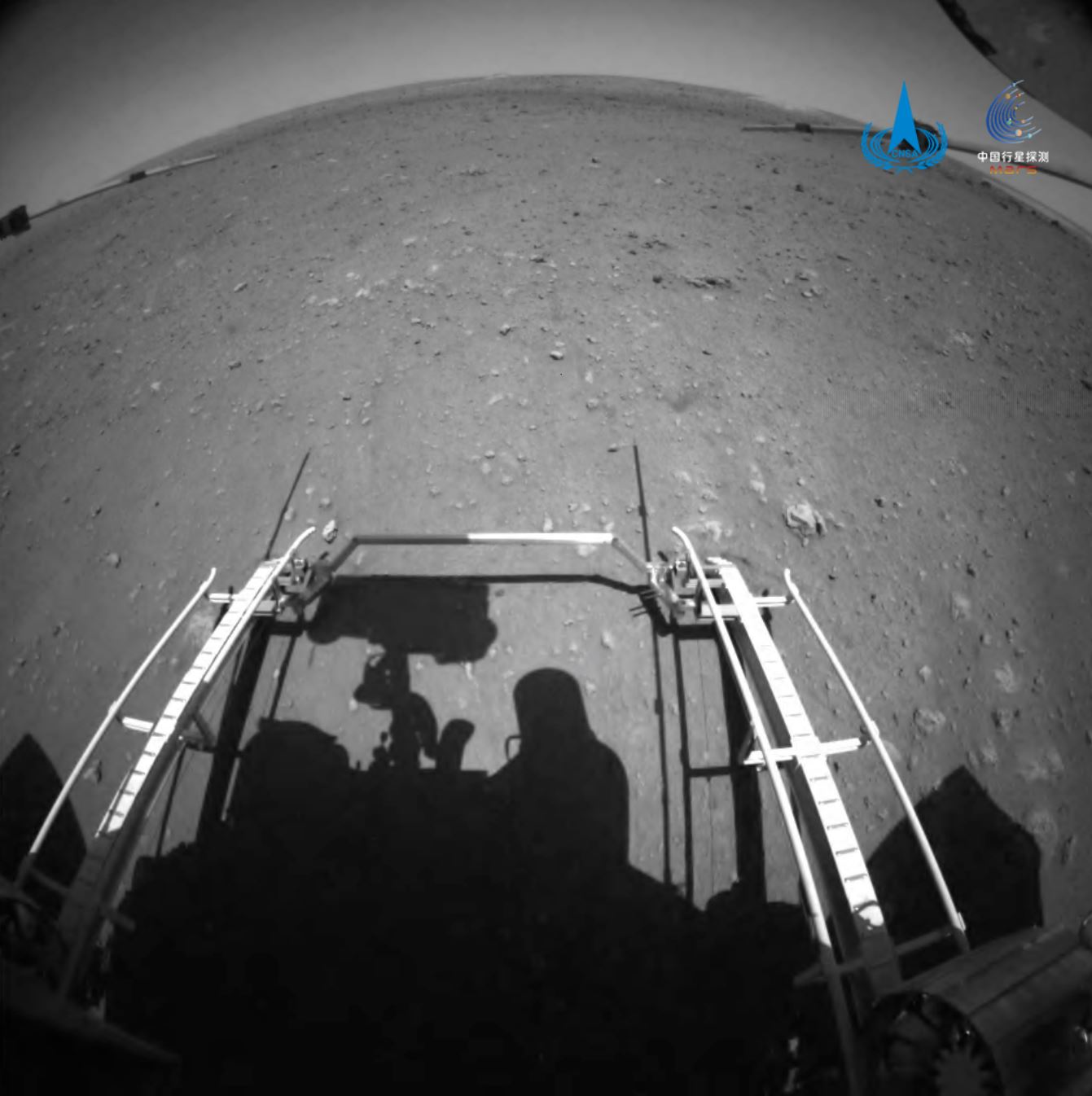
x



